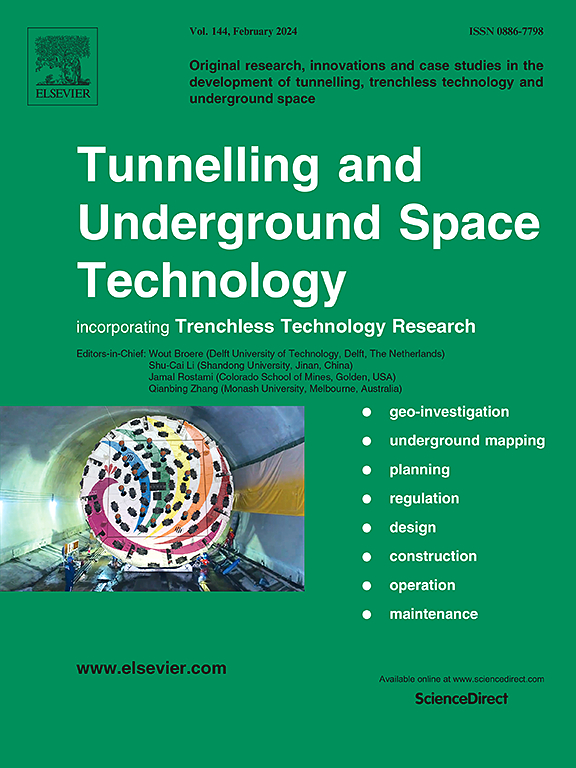Investigation of the flame behavior and smoke temperature of tunnel spill fires under different top ceiling smoke extraction velocity
IF 6.7
1区 工程技术
Q1 CONSTRUCTION & BUILDING TECHNOLOGY
引用次数: 0
Abstract
The top ceiling smoke exhaust under different velocities not only removes heat and smoke in tunnel, but also has complex effects on the fresh and cold air entrainment, as well as the convective and radiative heat transfer, which in result affects the diffusion of the spilled fuel, the flame behavior and smoke temperature of tunnel spill fires. To investigate the impact of the top ceiling smoke extraction velocity on the behavior of tunnel spill fires, a series of experiments involving ethanol spills were conducted in a model tunnel. These experiments aimed to establish models that correlates with flame behavior and smoke temperature distribution, and to facilitate an analysis of the heat transfer mechanisms. The research findings reveal that as the smoke extraction velocity increases, alterations in the heat transfer mechanism and variations in the air entrainment effect lead to a biphasic trend, i.e., an initial decrease followed by an increase in the combustion area and flame oscillation frequency, while flame height shows the opposite trend. Furthermore, the dimensionless model, which accounts for the interplay between combustion intensify mechanism and the heat dissipation mechanism provides explanations for the observed variations in flame behavior. Regarding the maximum temperature rise on the tunnel ceiling, it is primarily dependent on the discharge rate, due to the asymmetrical positioning of the smoke vent, the longitudinal temperature on the left zone of the ceiling attenuates more rapidly than that on the right zone. On the left side, the temperature attenuation trend is jointly influenced by both the discharge rate and the smoke extraction velocity, whereas on the right, it solely depends on the discharge rate. Further heat transfer analyses highlight that the smoke extraction velocity influences both convective and radiative heat feedbacks, with convective heat feedbacks playing a dominant role. As the discharge rate increases, spill fires eventually transition to being dominated by radiative heat transfer. In this study, between 30% and 50% of the heat in the fuel layer was lost through the bottom plate, primarily through conduction, followed by convection.
求助全文
约1分钟内获得全文
求助全文
来源期刊

Tunnelling and Underground Space Technology
工程技术-工程:土木
CiteScore
11.90
自引率
18.80%
发文量
454
审稿时长
10.8 months
期刊介绍:
Tunnelling and Underground Space Technology is an international journal which publishes authoritative articles encompassing the development of innovative uses of underground space and the results of high quality research into improved, more cost-effective techniques for the planning, geo-investigation, design, construction, operation and maintenance of underground and earth-sheltered structures. The journal provides an effective vehicle for the improved worldwide exchange of information on developments in underground technology - and the experience gained from its use - and is strongly committed to publishing papers on the interdisciplinary aspects of creating, planning, and regulating underground space.
 求助内容:
求助内容: 应助结果提醒方式:
应助结果提醒方式:


